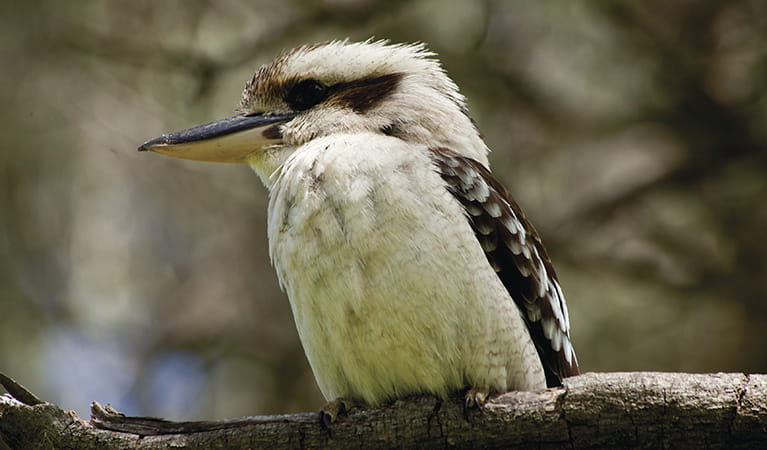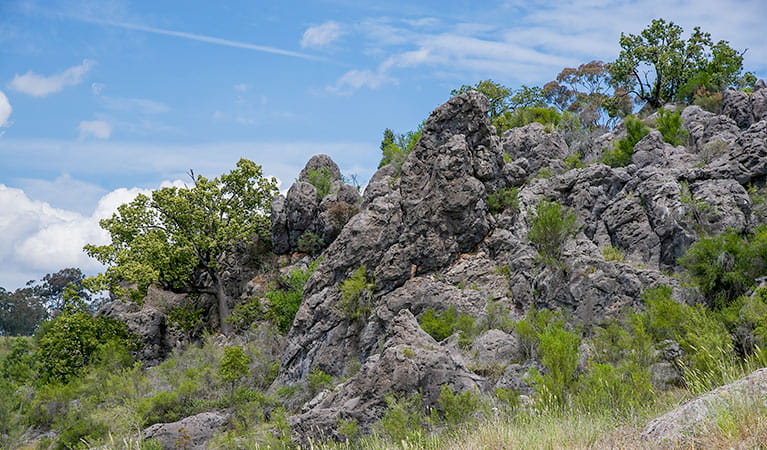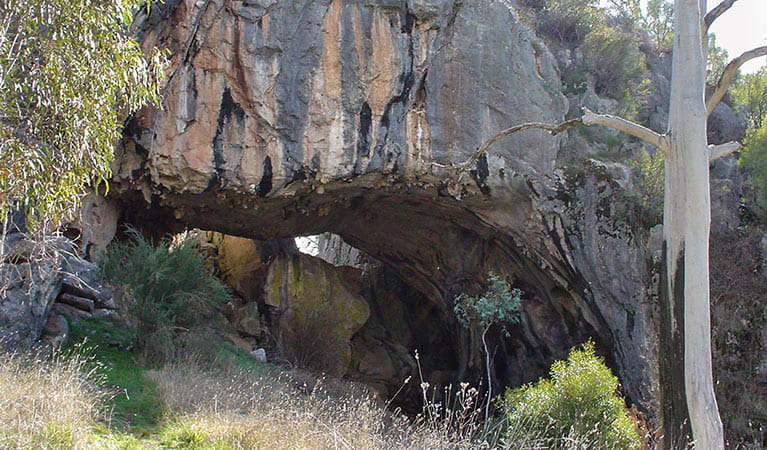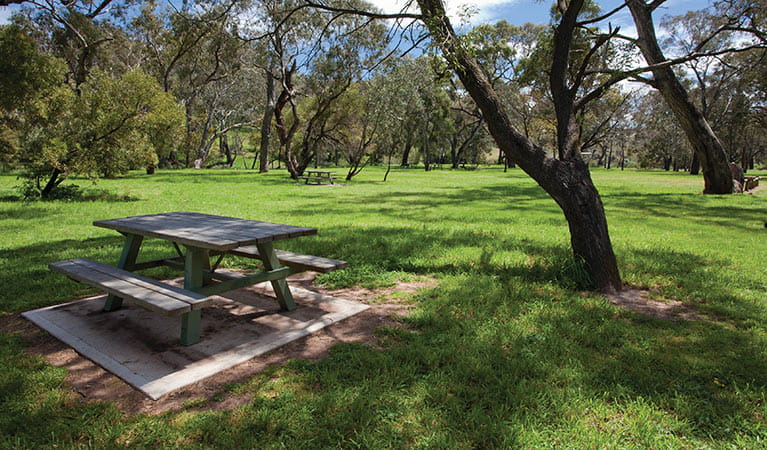Borenore Karst Conservation Reserve
Learn more
Learn more about why this park is special
Borenore Karst Conservation Reserve is a special place. Here are just some of the reasons why:
Protecting the precious

Borenore Karst Conservation Reserve plays a special role in the preservation of some of Australia's precious native flora and fauna. A haven for birds, the park is home to thornbills, honeyeaters, kookaburras, magpies, treecreepers, weebills and more. Another special flying creature finding protection here is the eastern bent-winged bat, a threatened species that spends the winter hibernating in Tunnel Cave, before emerging in spring ready to migrate. Borenore Karst Conservation Reserve also contains the endangered box gum woodland vegetation community.
- Verandah Cave Take the easy walk from Borenore picnic area to Verandah Cave, where you can explore its limestone outcrops and pools of water in Borenore Karst Reserve.
From limestone to marble

Marvel at the stalactites and stalagmites at Borenore Karst Conservation Reserve. The karst or limestone, as it is better known in the reserve, probably began life as limey mud and coral reefs some 390-400 million years ago when the area was located off the east coast of Australia. Around 12 million years ago, nearby Mount Canobolas spewed lava over the limestone, turning it into marble. Borenore marble, known as Borenore Red, was used in many public buildings in Sydney, including Transport House in Macquarie Street, and countless marble fireplaces.
- Arch loop track Explore Arch Cave along the easy Arch loop track, a short walk from the picnic area. Look for stalactites, stalagmites and columns in the cool cavern.
- Verandah Cave Take the easy walk from Borenore picnic area to Verandah Cave, where you can explore its limestone outcrops and pools of water in Borenore Karst Reserve.
Aboriginal connections

The permanent flow of Boree creek and the reliable shelter of caves meant that this area was used for thousands of years by the Wiradyuri people. In fact, the name 'Borenore' is believed to be derived from two Wiradyuri words: bora which means ceremony and nora nora meaning shelf or overhanging rock. The reserve remains an important place for Aboriginal people today and protects a number of ancient sites, including Arch Cave which is highly significant for local Aboriginal women as a maternity site.
Mystical adventure

Home to the ancient Arch Cave, Borenore Karst Conservation Reserve harbours a whole world that thrives in the dark. Light up your head torch and marvel at the stalactites and stalagmites. Listen to the drips of water around you that keep the air moist, the perfect breeding ground for the mosses and lichen surrounding the entrance. The musky smell you will notice is the tell-tale sign that bats are about as the caves are a precious home to these protected species.
- Borenore picnic area With a large grassy area, barbecues and picnic tables, Borenore picnic area is a great place for a family picnic. After lunch, take an easy walk to explore Arch Cave.